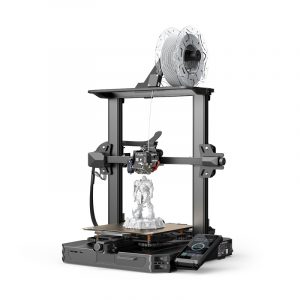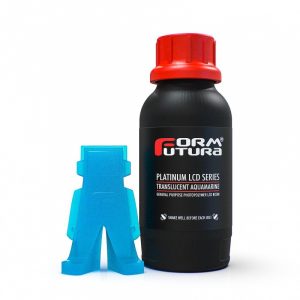Table of Contents:
The story of the 3D printer comes from the pages of a science fiction novel
3D printing is a set of extremely advanced manufacturing techniques, which, based on a previously prepared three-dimensional model, allow to reflect almost any shape. Interestingly, the accuracy of additive technologies is now not only on a par with other manufacturing methods, but in some cases can even surpass them, making it possible to create parts with extremely complex geometries.
However, it wasn’t always this way, and the history of 3D printing began in a really humble way – specifically with the vision of American writer Murray Leinster. In a short science fiction story he published in 1945, he described how modern 3D printers using FFF/FDM technology work.

Unfortunately, inventors in the 1950s had relatively limited capabilities that simply did not allow them to implement the vision of a 3D printer, so the world still had to wait quite a while for the first 3D printing.
History of 3D printing with light-curing resins
3D printing technology is a direct response to an unusual market demand for the ability to efficiently, accurately and fully reproduce previously prepared models. It is therefore not surprising that the real first 3D printing is attributed to the Japanese scientist Hideo Kodama, whose aim was to create a device capable of rapid prototyping.
The patent application he submitted, which was ultimately rejected for formal reasons, is undeniably the foundation of today’s SLA technology. The story of the resin 3D printer was further pursued by a French trio of scientists consisting of Jean-Claude André, Alain le Méhauté and Olivier de Wiite. Their patent, unfortunately, also failed to become an industry standard, although the first 3D printing done by the French was really promising.
Interestingly, at the same time an American entrepreneur, Chuck Hull, was working on a similar solution. After many months of experimentation, he managed to create a working prototype that used ultraviolet light to illuminate a special light-curing resin. His invention was subjected to many practical tests, and Hull himself eventually received a patent for it, thus directly influencing the history of the 3D printer.
Stereolithography (SLA) technology is still used in many industries today, and as it continues to evolve, it can also be found more and more in the workshops of do-it-yourselfers and hobbyists around the world.
History of 3D printing based on thermoplastics
The possibility of spatial printing with plastic filaments wound on handy spools is thanks to another American engineer. Steven Scott Crump’s idea was brilliantly simple – combine a hot glue gun with particles of powdered polyethylene and wax.
The result of this concept was the first 3D printing, specifically a toy frog that Crump made himself for his daughter. The model was created on a flat surface, layer by layer – just like in today’s 3D printers.

The continuing story of Crump’s idea 3D printer is just as interesting as its first iteration. This time Scott decided to combine his glue gun with a metal gantry, a set of motors and computer software that controlled the entire device. The American continued to work up a sweat developing his invention, constantly improving it. His final creation turned out to be so good that Scott Crump decided to patent it, which he did in 1988. He and his wife then founded Stratasys, a company that is still in operation today.
How useful was this post?
Click on a star to rate it!
Average rating 0 / 5. Vote count: 0
No votes so far! Be the first to rate this post.




















